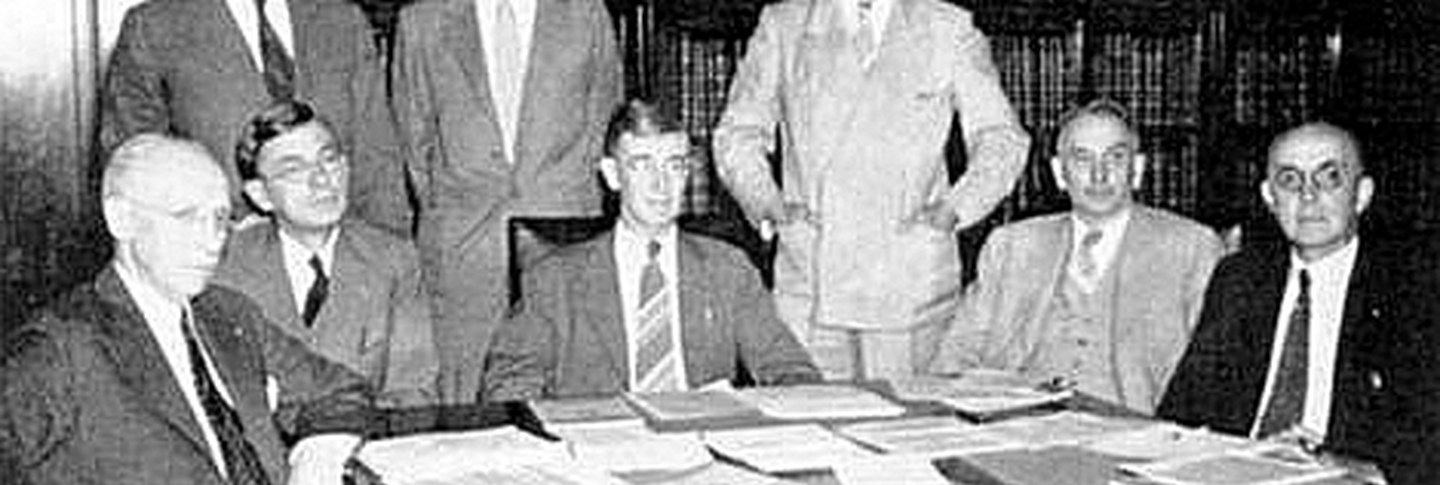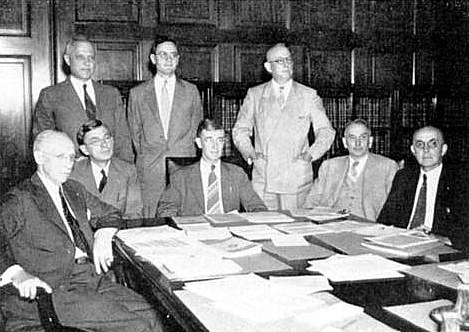In May 1942, following the removal of artworks from Dumbarton Oaks for safekeeping, the institute invited the War Department’s National Defense Research Committee (Office of Scientific Research and Development) to occupy the vacated museum wings and other areas of the Main House. They would remain on the premises until March 1946.
This unit of the Research Committee was chaired by Harvard University president James Bryant Conant. Part of the unit’s work, which was also carried on at other locations, was planning the development of the world’s first controlled nuclear chain reaction—a critical step in attaining an atomic bomb, the goal of the Manhattan Project and the Los Alamos National Laboratory. At Dumbarton Oaks, the Research Committee also worked on the development of chemical warfare agents. In 1943, the Committee’s work at Dumbarton Oaks led Robert Bliss famously to remark:
Dumbarton Oaks now presents a strange juxtaposition. One half of the building is devoted to evolving means to kill human beings more speedily and in greater numbers; the other half continues to develop greater knowledge on the artistic creation of man. One works for the development of the most hideous activity of war, the other for the discovery and preservation of the beauty of human expression.
However, not all of the Research Committee’s activities at Dumbarton Oaks focused on the destructive capabilities of war. In 1943, the Committee issued a “Memorandum on meeting to discuss development of 5% S-461 ointment. Dumbarton Oaks, Washington, D.C. NDRC October 2, 1943.” The S-461 ointment would be developed and used to treat mustard gas burns.

